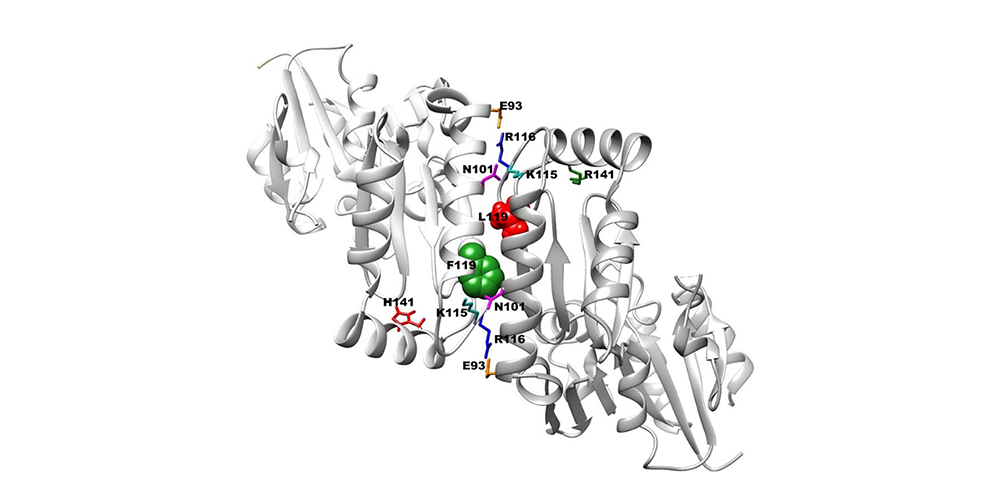Last week, we posted a preprint describing new yeast models of Phosphomannomutase 2 Deficiency, or PMM2-CDG, the most common congenital disorder of glycosylation in the world. This PMM2 model preprint is our second preprint on bioRxiv which, for the uninitiated, is the preprint server of Biology. Anyone who has known me since my postdoc days knows that I’m an Open Science and Open Access advocate. Some would call me a zealot. When preprinting started to take off beyond the early adopters in evolutionary biology and computational genomics, I knew Perlara had to embrace a free and immediate publication channel for broadcasting discoveries. We’re equally as excited to post our PMM2 model preprint, as we were our first preprint on NGLY1 Deficiency, on a platform where anyone with Internet access can read, evaluate, build on or disprove our findings.
Yeast Models Of Phosphomannomutase 2 Deficiency, A Congenital Disorder Of Glycosylation https://t.co/UGf8wTdUNf #bioRxiv
— bioRxiv (@biorxivpreprint) September 14, 2018
Developing PMM2-CDG patient avatars
We launched the PMM2-CDG PerlQuest with our partner, Maggie’s PMM2-CDG Cure, in the first quarter of 2017. At the time, it was our most ambitious PerlQuest, because we proposed to develop and screen yeast, worm and fly PMM2-CDG models in parallel. This post briefly recounts the yeast model development and drug screening work that culminated in this PMM2 model preprint. Jessica, head of our yeast team, will explain the nitty-gritty science in a follow-up post, after she returns from a well-deserved vacation!
In spring 2017, Nina, our Director of Research and Development, developed a Research Plan to generate yeast PMM2-CDG patient avatars that produce mutant protein at different expression levels. This was done in collaboration with Richard Yu and Gustavo Pesce, two expert yeast biologists and genetic engineers who, at the time worked, for Next Interactions, and now have their own company called Abalone Bio. Recall that the yeast version of human PMM2 is called SEC53. In summer 2017, Next Interactions successfully generated all the requested SEC53 mutant strains each expressing a different PMM2-CDG mutation.
 Preliminary data generated by Next Interactions in Summer 2017
Preliminary data generated by Next Interactions in Summer 2017
The preliminary data looked encouraging, but we knew we had to replicate the results in-house. In fall 2017, Jessica joined the company and took over the project, initially setting out to replicate Next’s findings. By the end of 2017, she had replicated the original results with three PMM2 variants in haploid cells. Last January, Jessica wrote a blog post summarizing where the yeast program stood at the start of 2018: poised for genotype-phenotype analysis and drug screens.
Collecting data for the PMM2 model preprint
From that point on things kicked into high gear. This past spring, we posted Jessica’s progress report.
🆕 post on The Ark!@jessplao with updates on yeast models for our PMM2-CDG PerlQuest https://t.co/xl7uaLIAik
— Perlara (@PerlaraPBC) May 8, 2018
In addition to all the data we had collected on haploid cells, we now had data on diploid cells. This was of particular importance because unlike in worms and flies – where establishing and maintaining compound heterozygosity is non-trivial – we could deftly engineer any PMM2 variant affecting a conserved amino acid as a haploid, and then matchmake haploids to create any compound heterozygous coupling. We also got the first hint that Maggie’s E139K allele results in functional SEC53 protein, a result we could only confirm by expressing human PMM2 in yeast cells lacking SEC53. The Microsource Spectrum drug repurposing screens were completed in Q2. We spent the summer validating hits, codon-optimizing PMM2 for expression in yeast cells, and adapting a mammalian cell PMM2 enzymatic assay to yeast cells. You can read all about it in the PMM2 model preprint!
Feature image courtesy of PLOS ONE



